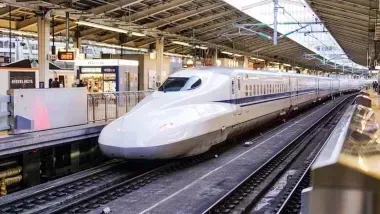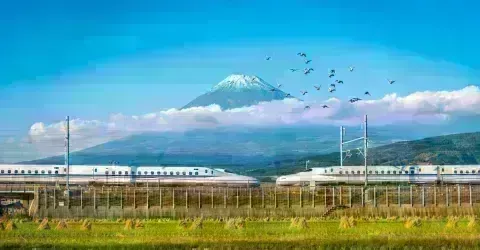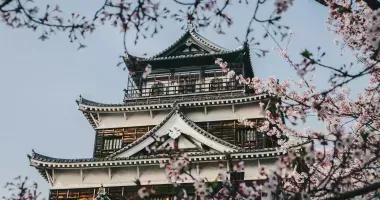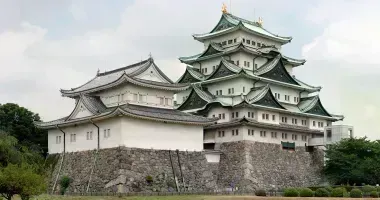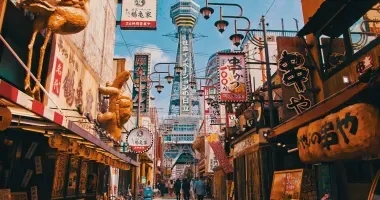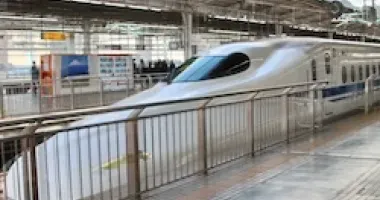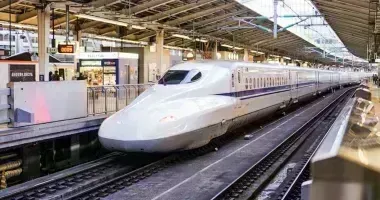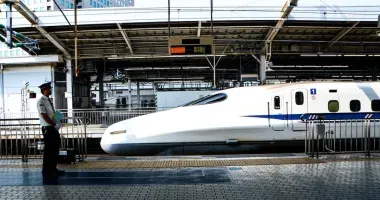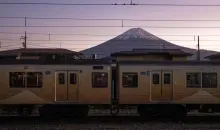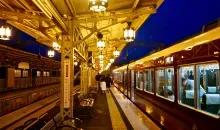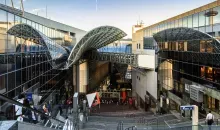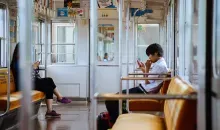The Shinkansen Bullet Train Network
Japan's high-speed bullet trains
The first Shinkansen was issued for public use in 1964, right before the Summer Olympics held in Tokyo that same year. At the time, it was a marvel of true innovation in the transportation world and, to many, represented Japan's rapid development after the Second World War.
Which Shinkansen is which?
Into the modern day, the Shinkansen (新幹線) bullet train is synonymous with travel in Japan and is a dependable and efficient means of cross-country travel utilized by visitors to the country and commuting Japanese residents alike. The Shinkansen bullet train is operated by Japan Railways, and thus, it is fully accessible on the national level with the Japan Rail Pass (a supplementary charge is needed to ride the Nozomi and Mizuho Shinkansen trains), along with purchases of tickets between different destinations across the country.
Due to their oftentimes poetic names, it can be difficult to determine which service you should take for your trip. Here's a rundown of all Shinkansen lines and their services! For example, three train types coexist on the Tokaido Line, which connects Tokyo and Osaka and is one of the country's most popular routes.
Here is an overview of the Shinkansen network in Japan, accessible with a Japan Rail Pass and with individual train tickets purchase.
From North to South
The Shinkansen is Japan's high-speed train network and the most practical way to travel across the country, as its high speeds and ease of use make it great from commuting between prefectures without the need to book tickets well in advance, check in, or go through intense security, as compared to traveling via airplane!
There are eight main Shinkansen lines, each of which has a number of services in operation. These services can be categorized as follows:
- Express trains (特急) only stop at major stations and are the fastest Shinkansen trains
- Semi-express trains (急行) stop at more stations; they are slower than Express trains but faster than Local trains
- Local trains (各駅停車) stop at every station on the route and therefore are the slowest.
Traveling north
The Hokuriku Shinkansen has four different services:
- Asama Shinkansen - Shorter journey between Tokyo to Nagano
- Kagayaki Shinkansen - Tokyo to Kanazawa, with only a few stops in between, including Nagano and Toyama.
- Hakutaka Shinkansen - Goes from Tokyo to Kanazawa with more stops in between.
- Tsurugi Shinkansen - Goes between Toyama and Kanazawa and is often used by those commuting to work.
The Joetsu Shinkansen has two services in operation:
- Toki Shinkansen - Fastest between Tokyo and Niigata that makes the journey in around 2 hours. Some Toki trains use 2-story train sets and are known as Max Toki.
- Tanigawa Shinkansen - Serves all stations between Tokyo Station and Echigo-Yuzawa Station. During the winter, some trains stop at Gala Yukawa Station.
The Yamagata Shinkansen only has one service:
- Tsubasa Shinkansen - Runs between Tokyo and Shin-jo in 3 hours 30 mins. The Torei-yu Tsubasa is a unique train running mainly on weekends between Fukushima and Shinjo.
The Akita Shinkansen has one service:
- Komachi Shinkansen - Goes between Tokyo and Akita with stops at Sendai and Morioka. All carriages on these trains require a reservation.
The Tohoku Shinkansen has two different services:
- Yamabiko Shinkansen - The fastest running as far north as Morioka, although some terminate at Sendai.
- Nasuno Shinkansen - The slowest one and serves all the station between Tokyo and Koriyama.
The Hokkaido Shinkansen has two services as well:
- Hayabusa Shinkansen - Reaches Shin-Hakodate and Hokkaido in 4 hours with the fastest train. Note that all seats for this train must be reserved in advance.
- Hayate Shinkansen - Operates one return service per day between Morioka and Shin Hakodate and one return service between Shin-Aomori and Shin-Hakodate.
Going south
The Tokaido Shinkansen has three types of services:
- Nozomi Shinkansen - The fastest service, connecting Tokyo to Kyoto in 2 hours and 10 minutes. Requires a supplemental fee if using with the JR Pass.
- Hikari Shinkasen - The second-fastest service, taking about three hours from Tokyo to Shin Osaka.
- Kodama Shinkansen - is the slowest train, as it stops at every station between Tokyo and Shin Osaka, taking almost 4 hours.
The Kyushu Shinkansen, has three types of Shinkansen:
- Mizuho Shinkansen- The fastest train service, stopping at Hakata, Kumamoto and Kagoshima-Chuo. Requires a supplementary charge to ride with the JR Pass.
- Sakura Shinkansen- Second-fastest train service to Kyushu.
- Tsubame Shinkansen- Stops at all stations on the way to Kyushu.
In all the different regions of Japan, all the above Shinkansen bullet trains are covered by the Japan Rail Pass, including the Nozomi and Mizuho Shinkansen bullet trains that are part of the Tokaido-Sanyo Shinkansen network; however, they require an additional fee that varies depending on the departing station and arriving station. You can also directly purchase individual train tickets to book the Shinkansen trains running on our available routes.
To better understand the difference between the express, semi-express and local Shinkansen trains, here is a quick infographic detailing the different available trains on the Tokyo to Shin-Osaka line, and where each type of Shinkansen stops. You'll notice that the Nozomi train is the fastest, the Kodama is the slowest, and the Hikari train averages in the middle, as it doesn't always stop at each of its optional stations (triangles in the infographic below).
Choose the best train journey that suit your travel needs
More travel tips













